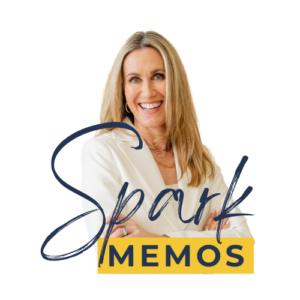
Saying ‘Yes’ Too Much?
Here’s How to
Reclaim
Your Time
Dear Spark Family,
Let’s be honest—how many times have you said “yes” to something you knew you probably shouldn’t? I’m right there with you. As a working mom and a lifelong people-pleaser, I’ve been guilty of saying yes to things that don’t serve my bigger goals, just because I didn’t want to let anyone down.
This week, I want to talk about the art of saying no. And yes, it really is an art! It’s a skill that takes time to learn, but once you start mastering it, it can change everything. It’s about protecting your energy, staying focused on what truly matters, and setting the example for your team that boundaries are a strength, not a weakness.
Why Saying No Is So Important
As leaders, we feel this constant pressure to be everything to everyone. To say “yes” to every project, every ask, every meeting. We worry about letting people down or missing out on an opportunity to help. But here’s the truth: Every time we say “yes” to something that doesn’t align with our priorities, we’re saying “no” to something that does.
Think of saying “no” as a way to create space for the things that truly matter. It’s not about shutting people out; it’s about choosing the right doors to walk through so that when you show up, you’re present and fully engaged.
How to Start Saying No
(and Feel Good About It)
I know firsthand that saying “no” can be uncomfortable. Here are a few strategies that have helped me—and maybe they’ll help you too:
Ask Yourself If It Aligns: Before you say “yes,” take a beat and ask, “Does this fit with my bigger goals or values?” If it doesn’t, it’s okay to turn it down. Remember, protecting your focus isn’t selfish—it’s a form of leadership.
Create Boundaries That Work for You: A kind, direct “no” can be as simple as, “Right now, I’m focused on other priorities to best serve the team.” Boundaries aren’t barriers—they’re pathways to clarity and purpose.
Practice Makes It Powerful: It’s okay if saying “no” feels strange or even a bit guilty at first. The more you practice, the more natural it becomes. With time, saying “no” will feel like a tool that makes you a better leader.



